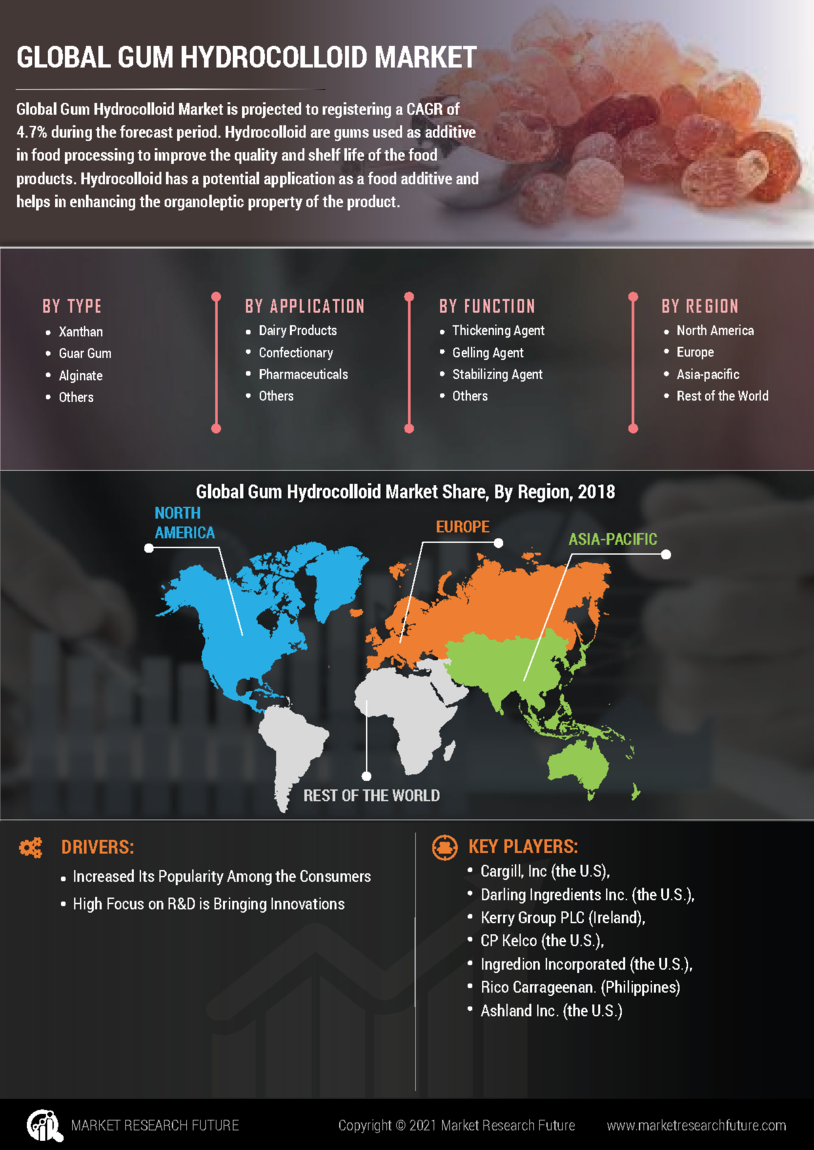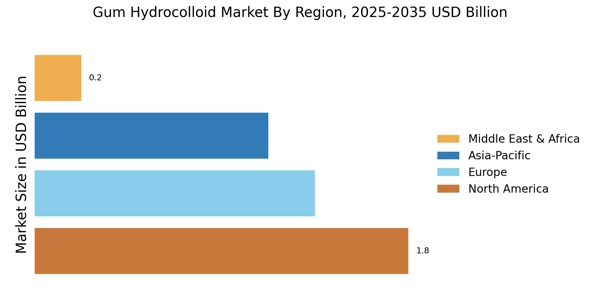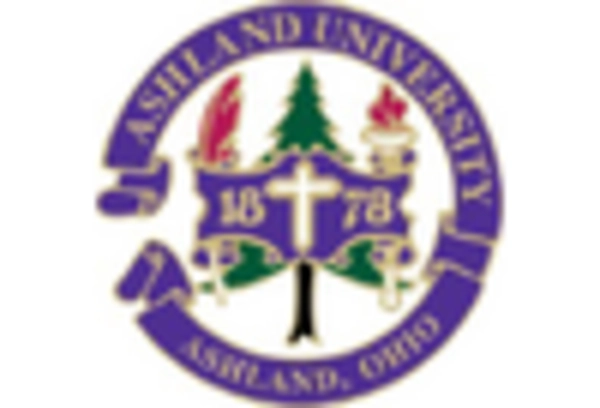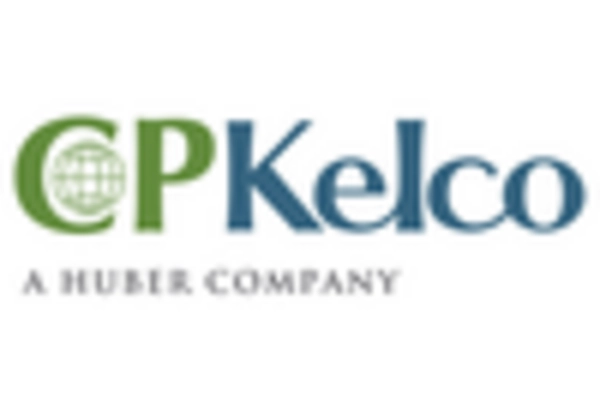Innovations in Food Technology
Innovations in food technology are reshaping the Gum Hydrocolloid Market, as new applications and formulations emerge. Advances in processing techniques and ingredient functionality are enabling manufacturers to create innovative products that cater to diverse consumer needs. For instance, the development of plant-based hydrocolloids has gained traction, aligning with the growing trend towards vegan and vegetarian diets. Furthermore, the integration of hydrocolloids in health-oriented products, such as low-calorie and gluten-free options, is becoming increasingly prevalent. This innovation-driven landscape is expected to foster growth within the Gum Hydrocolloid Market, as companies strive to differentiate their offerings and meet the demands of a more health-conscious consumer base.
Increased Focus on Sustainability
The Gum Hydrocolloid Market is witnessing a heightened focus on sustainability, as both consumers and manufacturers prioritize environmentally friendly practices. The demand for sustainable sourcing of ingredients is becoming a critical factor in product development. Many companies are now exploring biodegradable and renewable hydrocolloid sources, which align with the broader trend of reducing environmental impact. This shift is not only beneficial for the planet but also resonates with consumers who are increasingly making purchasing decisions based on sustainability criteria. As a result, the Gum Hydrocolloid Market is likely to see a rise in products that emphasize eco-friendly attributes, potentially leading to a competitive advantage for brands that successfully implement these practices.
Rising Demand for Clean Label Products
The Gum Hydrocolloid Market is experiencing a notable shift towards clean label products, driven by consumer preferences for transparency and natural ingredients. As consumers become increasingly health-conscious, they seek products that are free from artificial additives and preservatives. This trend is reflected in the food and beverage sector, where the demand for clean label formulations has surged. According to recent data, the clean label market is projected to grow at a compound annual growth rate of approximately 7% over the next five years. This growth is likely to propel the Gum Hydrocolloid Market, as manufacturers adapt their offerings to meet these evolving consumer expectations, thereby enhancing product appeal and market competitiveness.
Expansion of the Food and Beverage Sector
The Gum Hydrocolloid Market is significantly influenced by the expansion of the food and beverage sector. As urbanization and disposable incomes rise, there is an increasing demand for processed and convenience foods. This trend is particularly evident in emerging markets, where the food and beverage industry is projected to grow at a rate of around 5% annually. Hydrocolloids play a crucial role in food formulation, providing texture, stability, and moisture retention. Consequently, the growth of this sector is expected to drive the demand for gum hydrocolloids, as manufacturers seek to enhance product quality and consumer satisfaction. This dynamic presents a substantial opportunity for stakeholders within the Gum Hydrocolloid Market.
Growing Applications in Pharmaceuticals and Cosmetics
The Gum Hydrocolloid Market is expanding beyond food applications, with growing utilization in pharmaceuticals and cosmetics. Hydrocolloids are valued for their thickening, gelling, and stabilizing properties, making them ideal for various formulations. In the pharmaceutical sector, they are used in drug delivery systems and as excipients, enhancing the efficacy and stability of medications. Similarly, in cosmetics, hydrocolloids contribute to product texture and performance, catering to the rising demand for high-quality personal care items. This diversification of applications is expected to bolster the Gum Hydrocolloid Market, as companies explore new avenues for growth and innovation, thereby broadening their market reach.


















Leave a Comment